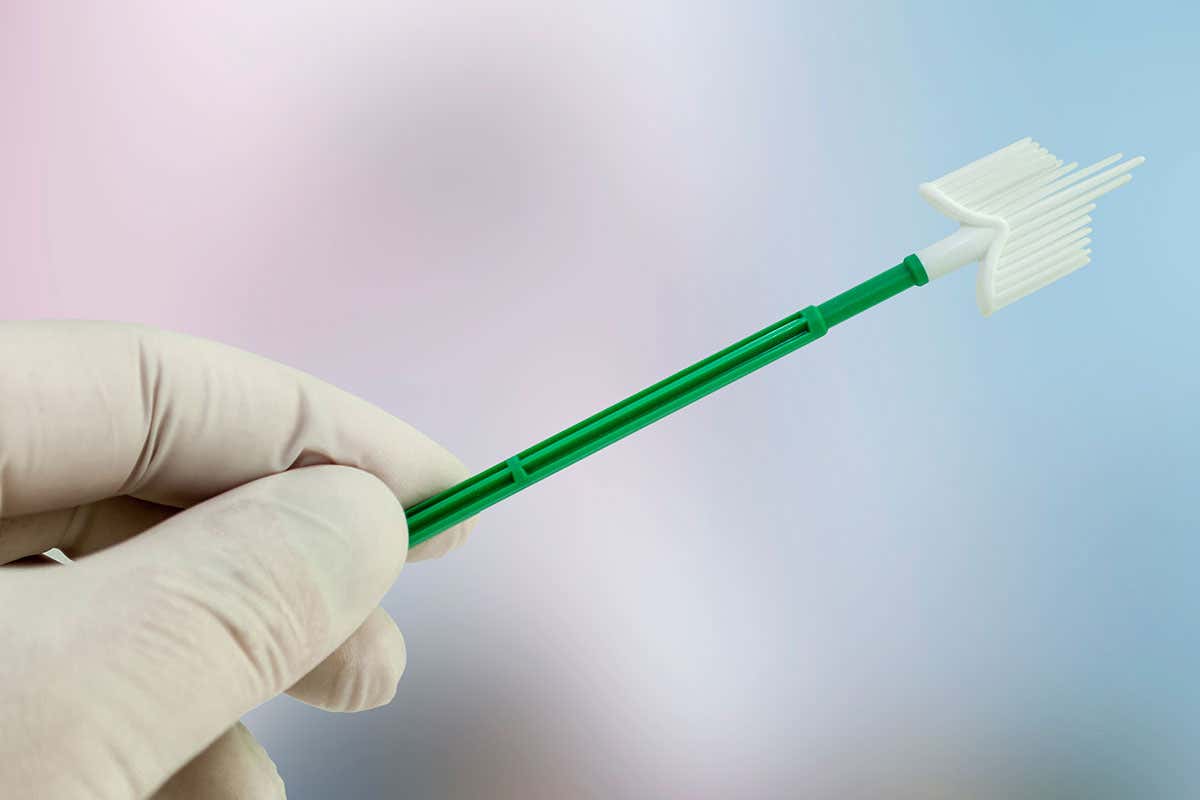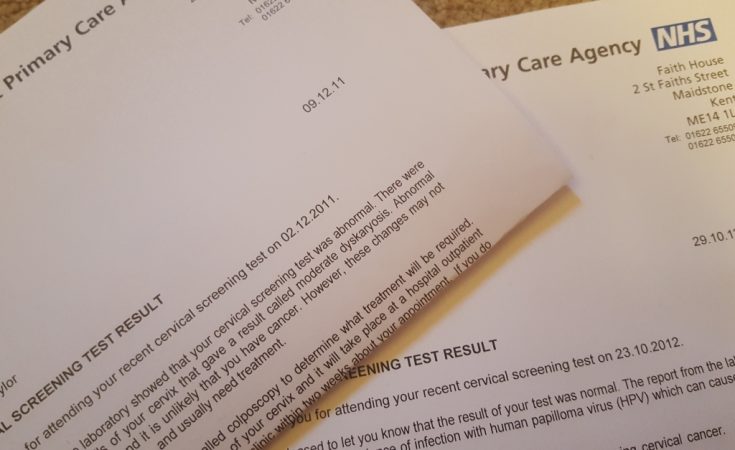After Panproctocolectomy surgery having a smear test may well be the last thing on your mind but smear tests are important and are a way of checking your cervix cells to make sure you don’t have abnormal cells that can potentially lead to cervical cancer.
Smear testing is at an all-time low at the moment and this blog post is like a little reminder to go and book your smear, a few minutes of discomfort can make the difference and potentially save a life or get treatment to remove abnormal cells before they become cancerous.
I’m 36 this year and I have had 4 smear tests in the last 12 years and one abandoned smear because the nurse couldn’t find my cervix.
My smear test
You don’t really need to prepare for a smear test, they are checking for abnormalities not if you’ve recently had a Brazilian. I always try to make sure that I am wearing a dress or a skirt. That way I only need to remove my knickers and jump on the table.
I was booked in for a smear test 3 months post Barbie Butt surgery but due to internal swelling the test was abandoned as my cervix was illusive and it was incredibly painful at the time.
Roll forward to my next letter in the post and I booked my smear as things have now settled down.
When booking my appointment I explained that my insides may have tilted back due to the surgery so the nurse was well prepared this time.
I roll into my appointment, a quick discussion regarding my date of birth etc and straight down to business. The nurse was lovely and it took her 4 attempts to find what was needed, I had to shuffle around a few times and lay flat in the end so things tilted back.
Was it painful? No, it was not. Was it uncomfortable? Slightly but it was over and done within 5 minutes and I was out and walked back home.
I got a stern telling off by the nurse as my coil has been in 2 years longer than the recommended replacement time, I am not looking forward to it being removed and replaced as its gone north but I have an appointment at the hospital on the 24th and a gynecologist will be dealing with that bag of fun and games. I will be writing about that in a separate blog post.
Tips
I have listed a few tips for you when you have your next smear:
- Relax – sounds difficult but the more relaxed you are the easier it will be
- Tell the nurse about your surgery – fully equipping the nurse means they can plan
- Laying flat on the table with your knees bent will help tilt things back up
- If it hurts or is overly painful please tell the nurse
- Take pain medication prior to your appointment to help
Smear testing in the UK
Smear testing in the UK typically starts from the age of 25, I know my daughter will be having the HPV vaccine later this year after her 12th birthday. Most of us over the age of 30 did not have that option back then as it wasn’t invented.
About cervical screening
Cervical screening is a free health test that helps prevent cervical cancer. It checks for a virus called high-risk human papillomavirus (HPV) and, if you have HPV, cervical cell changes (abnormal cells).
What is cervical screening?
Cervical screening is a free health test available on the NHS as part of the national cervical screening programme. It helps prevent cervical cancer by checking for a virus called high-risk HPV and cervical cell changes. It is not a test for cancer.
It is your choice whether to go for cervical screening. We hope this information helps you make the best decision for you and your health.
If you have symptoms, contact your GP surgery about having an examination. Cervical screening is not for people who have symptoms.
Who is invited for cervical screening?
You should be invited for cervical screening if you have a cervix. Women are usually born with a cervix. Trans men, non-binary and intersex people may also have one.
In the UK, you are automatically invited for cervical screening if you are:
- between the ages of 25 to 64
- registered as a female with a GP surgery.
You may get your first invite up to 6 months before you turn 25. You can book an appointment as soon as you get the invite.
How often will I be invited for cervical screening?
Your cervical screening result will help decide when you are next invited for cervical screening.
You may be invited:
- every year
- every 3 years
- every 5 years
- straight to colposcopy for more tests.
Cervical screening invites and coronavirus
Across the UK, cervical screening invites are being sent. If you have an invite or had your test cancelled because of coronavirus, you may now be able to book an appointment. However, some GP surgeries may not be able to offer appointments straight away.
What are the benefits and risks of cervical screening?
You are invited for cervical screening because evidence shows that the benefits of the test outweigh any risks. Along with the HPV vaccine, cervical screening is the best way to protect against cervical cancer and prevents over 7 in 10 diagnoses. However, like any screening test, cervical screening is not perfect and there are some risks.
Benefits of cervical screening
- Cervical screening aims to identify whether you are at higher risk of developing cervical cell changes or cervical cancer. This means you can get any care or treatment you need early.
- England, Scotland and Wales now use HPV primary screening, which is even better as it is based on your individual risk. This means how frequently you are invited for cervical screening is based on your last result and within a timeframe that is safe for you.
Possible risks of cervical screening
- In a few cases, cervical screening will give an incorrect result. This means it may say someone does not have HPV or cell changes when they do (a false negative). Going for cervical screening when invited can help reduce this risk, as it is likely HPV or cell changes that were missed would be picked up by the next test. It also means a result may say someone does have HPV or cell changes when they don’t (a false positive), which could mean they are invited for tests or treatment they don’t need.
- Sometimes cell changes go back to normal without needing treatment. At the moment, we can’t tell which cell changes will go back to normal, so treating means we can be sure we are preventing them from developing into cervical cancer. This means some people may have unnecessary treatment, which is called overdiagnosis or overtreatment. Using HPV primary screening should help prevent this.
I am hoping this helps all you ladies that are worried about your smear test following surgery. As always this blog is purely for advice and guidance.
As Always
Many thanks for reading
Louise Xx
You can learn more about cervical screenings here
This blog post is intended to give advice to ostomates. The information given is based on Louise’s personal experience and should not be taken as clinical advice. Each ostomates needs are unique to them and their stoma care routine. Please consult with your Stoma Care Nurse before undertaking any changes to your stoma care routine or if you are experiencing any health issues.

Meet the blogger: Louise
Meet Louise! She’s a blogger and ambassador for Pelican and has been for the last 3 years









